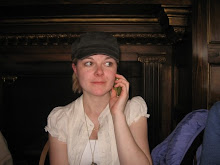Many of you may be wondering where I've been for the last two months. Well, I couldn't reveal my mission at the time, but files have been declassified and congressional meetings have taken place. I can now safely announce that I was in Germany on an extensive fact-finding mission to gather important information on the lavatory infrastructure of the EU.
Okay, I was there to learn German and try out some beer. But I really did gather some interesting information which I am now going to share with you.
Travelling through any foreign country is a journey into the unfamiliar and the endevour to identify it with the familiar. Foreign bathrooms are no different.
My first encounter with the unfamiliar was in a cafe in Switzerland, a few days before I landed in Germany. After a few drinks with an old friend, I excused myself to the bowels of the building, where the bathrooms lay. After flushing, I heard a mechanical noise coming from the direction of the bowl. I turned around and saw a little plastic arm extend from the back of the toilet, above the seat. It squirted blue cleaning liquid as the entire seat began to rotate.
I have to admit I was a bit frightened, and I high-tailed it out of there as quickly as I could--after washing my hands, of course. I relayed my story to my friend at the table. He assured me that it was not the beer; that the Swiss are just very clean and conscientious people.
So, too, are the Germans. I have never seen so many clean public restrooms in my life. Every single one, even in the divey places, was acceptably clean and well-maintained.
Most of them had some kind of cleaning technique for the seat, as well. In one bathroom in Goetingen, the seat was covered in plastic. When I pressed a button on the side, the plastic sleeve slid off and a new plastic sleeve slid on.
The wonders of German innovation!
My most perplexing moment actually began two years ago, when I first visited Germany. When I reached for the handle to flush the toilet, I realized there was none. There were only two square buttons installed in the wall above the toilet, one a bit smaller than the other. I tried pressing the big one (bigger is better, right?) and the toilet flushed. So no worries. Crisis averted.
But something had been nagging me ever since. It occupied a small space in the back of my mind, pulling at my subconscious for two years. What was the smaller button for?
When I returned for a full month, I decided it was time to swallow my pride, play the role of the ignorant American, and ask. So, I asked a roommate. It turns out the smaller button flushes the toilet, but uses less water. This way, you can control the amount of water you need, conserving when you don't need a lot.
So, along with their aversion to energy-hogging clothes dryers, the Germans use water-conserving toilets. Way to be clean and green, Germany!
You get four full rolls from this blogger!
Friday, April 23, 2010
Subscribe to:
Comments (Atom)
